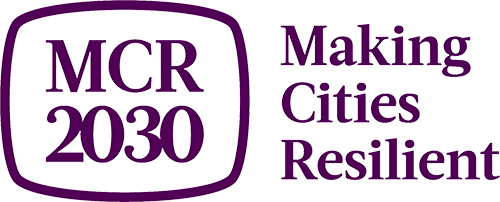Asia-Pacific consultations firm-up regional priorities for APMCDRR 2021

Following on from the Asia-Pacific Partnership for Disaster Risk Reduction (APP-DRR) Forum, a series of thematic consultations were organized to identify priority actions to be considered at the 2021 Asia-Pacific Ministerial Conference for Disaster Risk Reduction (APMCDRR).
The UN Office for Disaster Risk Reduction (UNDRR) and the Australian Government, as the convener and host of the APMCDRR respectively, organized from 8 to 10 December, three online consultations around the main themes of the 2021 APMCDRR.
Each consultation saw an average of 60 participants per session, with representation from governments, intergovernmental organisations, several UN and international organizations, and stakeholder groups.
While the APP-DRR Forum provided a baseline of where the region stood and identified broad opportunities and challenges to building resilience, the consultations were designed to allow participants to delve deeper into specific topics to formulate recommendations for action.
Under the overarching objective of strengthening risk governance, the consultations were structured around three themes, with each broken down into two sub-themes:
- Resilient investment and recovery:
- Financing; and
- Build back better.
- Resilient systems, services and infrastructure:
- Cities; and
- The private sector.
- Resilient communities:
- Inclusiveness; and
- Risk knowledge and communication.
Summarizing the discussion on financing and risk-informed investment, Ms. Riyanti Djalante, Head of the Disaster Management and Humanitarian Assistance in the ASEAN Secretariat, outlined scaling-up of forecast-based financing and anticipatory action, linking insurance to forecast, and decentralizing investments as important priority actions. Key enablers included the availability of accurate and robust risk information, increased dialogue with finance ministries and strengthening public financing systems, informed by tracking of investments.
One topic that generated considerable input and discussion was the resilience of infrastructure, services and systems, which is seen both as an avenue to invest in risk reduction and an opportunity to embed risk into development and resilience across sectors.
“There is unprecedented investment in infrastructure that is planned over the next 15 years, in energy, transport, potable water supply, sanitation, and telecommunication communications,” noted Dr. Robert Glasser, Visiting Fellow at the Australian Strategic Policy Institute and former Special Representative of the UN Secretary-General for Disaster Risk Reduction.
“Something in the order of 80 to 100 trillion dollars of new investment will go in these sectors, which exceeds the total value of the entire existing stock of infrastructure. If those investments are poorly risk-informed, we will be locking in exposure and vulnerability for decades to come.”
Strengthening the resilience of health infrastructure was highlighted as a key priority in the consultation on infrastructure and systems. This included improving coordination with national disaster risk management authorities to support cross-sectoral risk mitigation.
The discussion also noted the importance of ensuring a continuation of essential services, such as power and telecommunication, through enhancing the resilience of underlying systems to avoid costly disruptions.
“Looking at the public utilities, many of which are state-owned, do they have enough funding and are they thinking at the utility level of their business continuity planning for their resilience?” asked Mr. Harlan Hale, Regional Advisor at USAID Indonesia.
The third-day consultation focused on advancing the ‘leave no one behind’ agenda by focusing on making DRR planning more inclusive and improving outreach to vulnerable groups.
Actions items identified included: strengthening the science-policy-practice nexus to improve decision-making and communication with at-risk groups, including vulnerable and marginalized groups in resilience profiles, localizing DRR strategies, and empowering women to take on leadership positions in DRR.
Several other priorities emerged from the consultations, including the need for disaggregated data to ensure inclusive and intersectional approaches; the need to follow a network approach to building resilient infrastructure and a value chain approach to supporting small businesses; and utilizing social protection as a carrier of risk management priorities.
In terms of recovery from COVID-19, there was an overall ‘seize-the-moment’ attitude to build on the lessons of the pandemic to enhance systemic risk management and to use the recovery period to ensure green growth through ecosystem-based approaches.
Throughout the three days, participants remained engaged and energized, with the number of participants peaking on the third day. In the process, they provided plenty of insights and ideas to progress the APMCDRR agenda.
Thanking participants for their strong engagement, Ms. Jennifer Noble, Director of Disaster Resilience and Recovery at the Australian Department of Foreign Affairs and Trade, said:
“We look forward to hearing the DRR community’s priorities for the region and how we can translate that into fruitful discussions at the 2021 APMCDRR.”
As for the next steps, Mr. Animesh Kumar, Officer-in-Charge of the UNDRR Regional Office for Asia-Pacific, said:
“In early 2021, we will organize a series of sub-regional consultations, as well as stakeholder consultations, to elicit your final round of feedback on the APMCDRR outcomes and to enable you to develop your own commitments to be announced at the conference.”
The APMCDRR will be held virtually in 2021 and will be the largest gathering in the Asia-Pacific to advance disaster risk reduction efforts. Its outcomes will include the Brisbane Declaration and the Asia-Pacific Action Plan for the implementation of the Sendai Framework.

